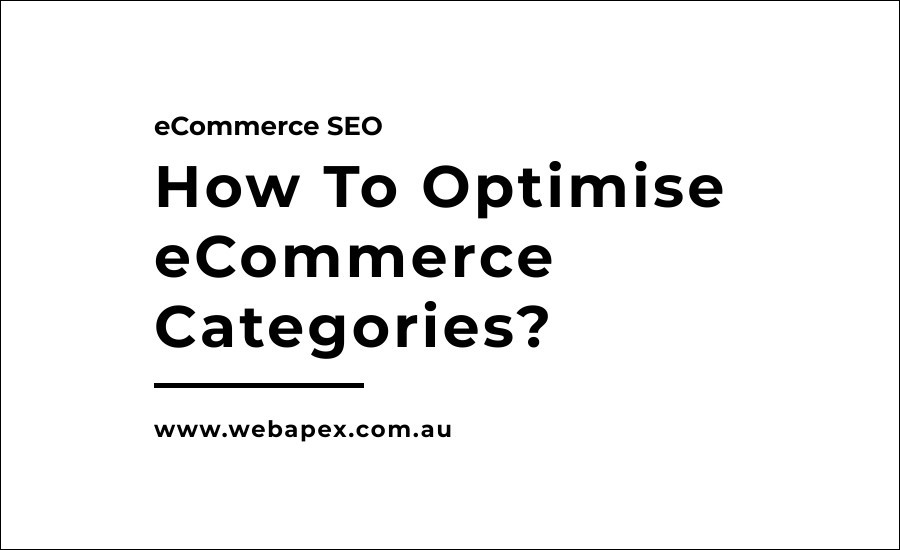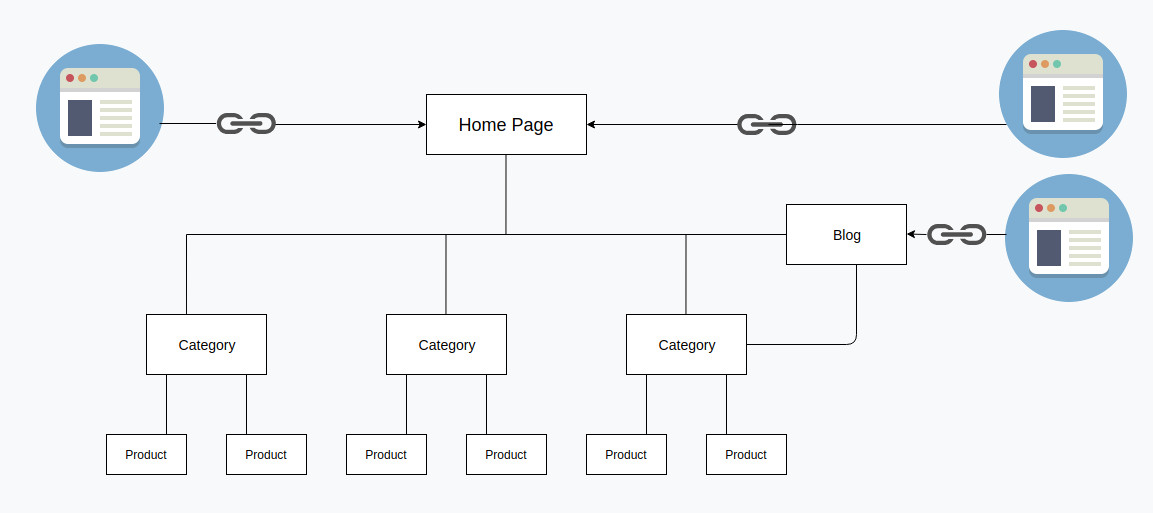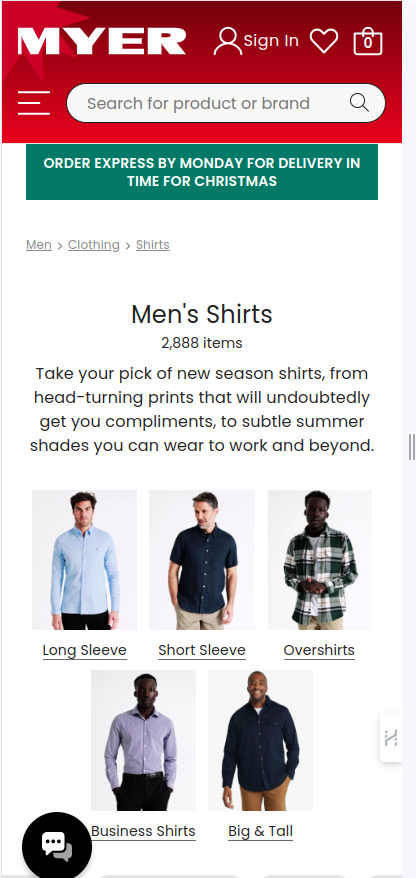Optimising eCommerce categories for SEO is a critical step in the overall strategy, and it’s one of the best ways to increase eCommerce sales. It starts right from the planning phase of eCommerce SEO and website design. Thoughtful consideration of your products and services, coupled with a focus on user experience and SEO principles, forms the foundation for a successful eCommerce venture.

One of the critical pitfalls to avoid is neglecting the optimisation of categories. The way you structure and optimise your product categories profoundly influences the discoverability of your products by both users and search engines.
Creating the right structure is the foundation
Establishing the right category structure is the cornerstone of effective eCommerce optimisation. Poorly planned category structures can lead to significant issues in your eCommerce strategy, adversely impacting both user experience and SEO performance.

When developing your category structure, prioritise user-centric organisation. Aim to create a structure that seamlessly guides users to the products or services they’re seeking.
A well-thought-out category structure offers several advantages:
- Enhanced User Experience: A logical and intuitive category structure ensures that visitors can easily navigate through your eCommerce store. This enhances the overall user experience, reducing bounce rates and increasing the likelihood of conversions.
- Greater user engagement: Once you make your eCommerce website easier to access then you can expect greater user engagement, longer time spent on the page and more online sales.
- Scalability and Growth: A well-organised category structure is scalable. As your eCommerce store expands, adding new products or services becomes more manageable when you have a robust category foundation.
- Improved SEO Performance: Search engines favour websites with clear and well-organised structures, simply because user loves it. A well-structured category system helps search engine crawlers understand the hierarchy and relevance of your content. This, in turn, positively influences your site’s SEO performance.
Make your categories not more than 2 clicks deep
Ensuring that your categories are easily accessible is a crucial aspect of optimising your eCommerce website. The principle of keeping categories within two clicks is rooted in enhancing user experience and minimising bounce rates.

- Accessibility and User Engagement: Users prefer a seamless browsing experience where they can quickly find what they’re looking for. By keeping your categories within two clicks, you reduce the effort required for users to access relevant information. This promotes user engagement and satisfaction.
- Faster Navigation: Easy category structures allow for faster and more straightforward navigation. When users can reach their desired category or product with minimal clicks, it improves the overall efficiency of their browsing experience.
- Bounce Rate Reduction: Bounce rates tend to increase when users encounter complex or confusing navigation. If categories are buried deep within the site’s structure, visitors may become frustrated and abandon the site. By maintaining a two-click rule, you significantly reduce the likelihood of high bounce rates.
- SEO Crawling and Indexing: Search engines also benefit from a simplified category structure. When categories are easily accessible within a few clicks, search engine crawlers can efficiently index your content. This can positively impact your SEO rankings, as search engines value user-friendly structures.
- Improved Conversion Rates: Streamlining the path to purchase is essential for eCommerce success. When users can quickly locate the products or categories they’re interested in, it increases the chances of conversion. Simplifying navigation contributes to a smoother conversion funnel.
Create user-friendly URL structure
Craft clean and descriptive URLs for your categories. Avoid generic strings of numbers or characters; instead, use clear, concise keywords that represent the content of the category.
- Make it short and descriptive: Make your URL short and descriptive so that can represent the category nicely, is easy to share and adds value to SEO. Longer URLs often look ugly and it reflects poor SEO work.
- Include main keywords: Integrate the main keywords of the category into the URL. This practice aligns with SEO best practices, aiding search engines in understanding the relevance of the page. Including relevant keywords in the URL contributes to better search engine rankings.
- Avoid numbers or characters: Strive to use words and dashes to separate words in your URLs. Avoid the use of numbers or other special characters, as these can be confusing for both users and search engines. A clean URL structure contributes to a more professional and user-friendly appearance.
- Try not to change the URL later: Once you’ve established a URL for a category and it has been indexed by search engines, refrain from altering it. Unless you have a very compelling reason to change, DO NOT change.
Example of good URL structure
- example.com/mens-shirts
- example.com/casual-shirts
- example.com/navy-full-sleeve-mens-shirt
Add category description
Write unique and compelling category descriptions. These descriptions should not only help users understand what’s in the category but also include relevant keywords.

Include relevant keywords in your category descriptions. This practice aligns with SEO strategies and assists search engines in understanding the thematic relevance of the category. Strategic use of keywords contributes to improved search engine rankings.
While search engines are becoming more sophisticated, proactive efforts such as crafting well-thought-out category descriptions can still make a difference. By providing valuable content and incorporating keywords organically, you contribute to the overall SEO health of your eCommerce site.
Learn more about the importance of content marketing in eCommerce SEO.
Include relevant images & visual content
The integration of relevant images and visual content plays a crucial role in enhancing the appeal and effectiveness of eCommerce category pages.
Here are some key benefits of adding visual content to your eCommerce category pages:
- Enhanced Aesthetics and Engagement: Visual elements, including images, infographics, and videos, contribute to the overall aesthetics of your eCommerce categories. Engaging visuals capture the attention of visitors and create a more visually pleasing and immersive browsing experience.
- Improved User Experience: Visual content enhances the user experience by providing a dynamic and interactive interface. Visitors can quickly grasp the essence of the category, leading to a more efficient and enjoyable exploration of products or services. Visuals aid in conveying information swiftly.
- Optimised Images for SEO: Incorporate well-optimised images into your category pages. This involves using high-quality images that are appropriately compressed for web use. Optimised images contribute to faster page loading times, which is a positive SEO signal. Additionally, ensure that image file names and alt text include relevant keywords.
- Infographics for Information Clarity: For categories that involve complex information or multiple product features, infographics can be highly effective. These visual representations simplify intricate details, making it easier for users to understand and compare various offerings within the category.
- Video Integration: Consider embedding videos that showcase products or provide additional information about the category. Product demonstration videos, tutorials, or behind-the-scenes clips can enhance user engagement. Videos also contribute to longer dwell times on your category pages, which is favourable for SEO.
- SEO Signals and Ranking Impact: Visual content serves as valuable SEO signals for search engines. When search algorithms identify relevant and optimised visuals on a page, it contributes positively to the page’s ranking. Rich media elements make your category pages more appealing to both users and search engines.
Internal linking
Internal linking your eCommerce categories from content pages like blogs is a strategic approach that extends beyond mere navigation.

Here’s a deeper exploration of the importance of internal linking and how it can be optimised for SEO:
- Distributing Authority: Internal linking allows you to distribute the authority and ranking power to your main category pages. Strategically planning your category pages to link them properly from content pages like blogs is the best way to boost the authority of the target pages to rank better search engine results pages (SERPs).
- Contextual Linking in Content: Embed contextual internal links within blog posts, product descriptions, or other content types. When discussing topics related to specific categories, link to those categories for additional information or product exploration. This not only enriches the user experience but also contributes to SEO.
- Strategic Anchor Text: Be intentional with your anchor text choices for internal links. Instead of generic phrases like “click here,” use descriptive and keyword-rich anchor text that provides context about the linked category. This reinforces the semantic relevance of the linked pages.
Write compelling meta-title
Crafting compelling meta-titles for eCommerce category pages is crucial for effective on-page SEO. Meta titles serve as the first point of contact between users and your category pages in search results. Engaging and optimised meta titles play a significant role in influencing click-through rates (CTR) and user behaviour, thereby impacting SEO performance.

Optimising meta titles involves a process of experimentation. Testing different versions helps identify the title that resonates best with the target audience and yields the highest CTR. Strategic inclusion of relevant keywords in the meta title is essential for search engine optimisation, aiding search engines in understanding the content’s relevance to user queries.
Meta titles should not only contain keywords but also other words to make them compelling to win more clicks.
Consideration of the meta title’s length is crucial. Make sure to utilise the maximum length to gain prominence. You can use the meta title length checker, to try a different combination to come up with the best title possible.
Need help?
We are a leading eCommerce SEO Melbourne service provider and we build high-quality category optimisation strategies. Let us help you take your digital strategy to the next level.